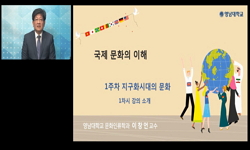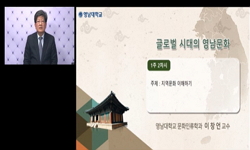With its rapid globalization, Seoul is now attaining its new metropolitan character as what Mike Douglass calls a cosmopolis. District governments, NGOs, foreign residents and citizens act concertedly towards creating inclusive multi-cultural communit...
http://chineseinput.net/에서 pinyin(병음)방식으로 중국어를 변환할 수 있습니다.
변환된 중국어를 복사하여 사용하시면 됩니다.
- 中文 을 입력하시려면 zhongwen을 입력하시고 space를누르시면됩니다.
- 北京 을 입력하시려면 beijing을 입력하시고 space를 누르시면 됩니다.
https://www.riss.kr/link?id=A101729147
- 저자
- 발행기관
- 학술지명
- 권호사항
-
발행연도
2015
-
작성언어
English
- 주제어
-
KDC
359
-
등재정보
KCI등재
-
자료형태
학술저널
- 발행기관 URL
-
수록면
217-244(28쪽)
- 제공처
-
0
상세조회 -
0
다운로드
부가정보
다국어 초록 (Multilingual Abstract)
With its rapid globalization, Seoul is now attaining its new metropolitan character as what Mike Douglass calls a cosmopolis. District governments, NGOs, foreign residents and citizens act concertedly towards creating inclusive multi-cultural communities within their own municipal boundaries in line with the government’s enhanced globalization policy. However, though being at the different stage of place making, some global villages are more inclusive than others, mainly depending on the nationality or ethnicity of dominant foreign residents and the existing social features of areas in which the villages are situated. With this backdrop, this paper examines how differently two distinctive ethnic communities in Seoul are formed through their selective relationships with the mainstream social life of Seoul: the French community called Seorae Village in the upper middle class district (Seocho-gu) and the Korean-Chinese community called Yeonbeon Village in the working class district (Guro-gu). By comparing these two cases, the paper draws a conclusion that Seoul is a multi-culturally diversified but ethno-politically divided cosmopolis as duality of a neo-liberal global city.
동일학술지(권/호) 다른 논문
-
- 한국도시행정학회
- 박종훈
- 2015
- KCI등재
-
범죄발생과 토지이용 간 공간적 상관관계 탐색을 위한 실증연구
- 한국도시행정학회
- 이경주
- 2015
- KCI등재
-
- 한국도시행정학회
- 김나윤
- 2015
- KCI등재
-
고속철도역세권에 있어 TOD개발에 미치는 결정요인에 관한 연구
- 한국도시행정학회
- 오은열
- 2015
- KCI등재





 DBpia
DBpia






